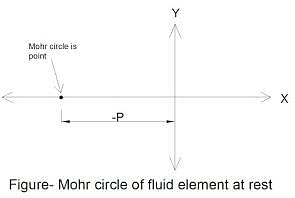Test: Fluid Pressure At a Point & Pascal’s Law - Mechanical Engineering MCQ
10 Questions MCQ Test - Test: Fluid Pressure At a Point & Pascal’s Law
A Hydraulic press has a ram of 30 cm diameter and a plunger of of 2 cm diameter. It is used for lifting a weight of 35 kN. Find the force required at the plunger.
The pressure at a point in the fluid is 4.9 N/cm2. Find height when the fluid under consideration is in oil of specific gravity of 0.85.
| 1 Crore+ students have signed up on EduRev. Have you? Download the App |
An open tank contains water upto a depth of 350 cm and above it an oil of specific gravity 0.65 for a depth of 2.5 m. Find the pressure intensity at the extreme bottom of the tank.
The diameters of a small piston and a large piston of a hydraulic jack are 45 mm and 100 mm respectively.Force of 0.09 kN applied on smaller in size piston. Find load lifted by piston if smaller in size piston is 40 cm above the large piston. The density of fluid is 850 kg/m3
In a hydraulic-brake system, a force of 25 N can be applied to a surface area of 5 cm2. What force can thus be exerted on each brake cylinder having an area of 100 cm2
We can draw Mohr’s circle for a fluid at rest.
If fluid is at rest in a container of a narrow mouth at a certain column height and same fluid is at rest at same column height in a container having broad mouth, will the pressure be different at certain depth from fluid surface?
Calculate the hydrostatic pressure for water moving with constant velocity at a depth of 5 m from the surface.
Pressure distribution for fluid at rest takes into consideration pressure due to viscous force.
Barometer uses the principle of fluid at rest or pressure gradient for its pressure calculation.


















